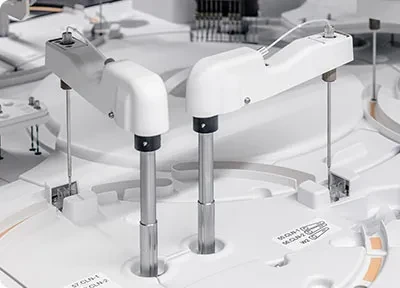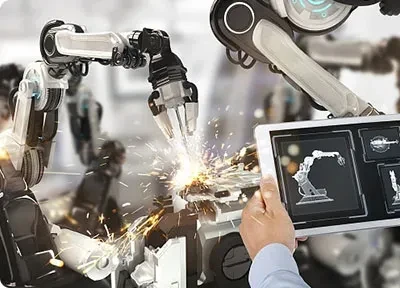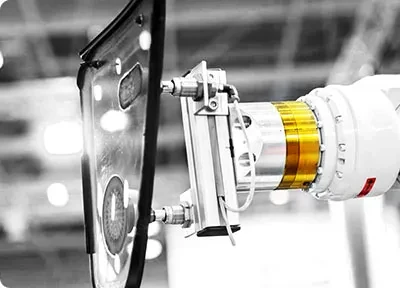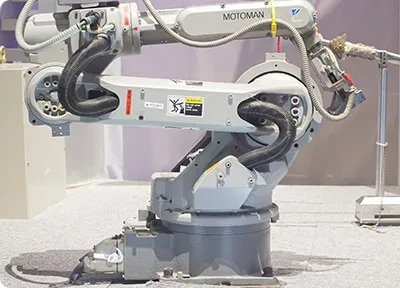Advanced Profile Extrusion Plastic Technology for Building
Revolutionizing the building and construction industry with precision-engineered plastic profile extrusion solutions that combine durability, aesthetics, and sustainability.

Overview of Profile Extrusion Plastic
Profile extrusion plastic is a manufacturing process used to create continuous lengths of custom-shaped plastic profiles with precise dimensions and properties. This technology plays a vital role in the building and construction industry, offering versatile solutions for a wide range of applications.
Precision Engineering
Profile extrusion plastic allows for the production of complex shapes with tight tolerances, ensuring consistent quality and performance in building applications.
Design Flexibility
With profile extrusion, architects and designers can realize innovative building designs with custom profiles that meet both aesthetic and functional requirements.
Sustainability
Plastic profile extrusion supports sustainable building practices through the use of recyclable materials, energy-efficient production, and long-lasting performance.
Why Profile Extrusion Plastic in Building?
Profile extrusion plastic has become a cornerstone technology in modern construction due to its ability to deliver cost-effective, high-performance solutions. From window frames and door seals to structural components and decorative elements, plastic profiles offer numerous advantages over traditional materials.
Excellent weather resistance and durability, reducing maintenance costs
Superior thermal and acoustic insulation properties
Lightweight yet strong, reducing structural load and transportation costs
Resistant to corrosion, rot, and pests, ensuring long-term performance
Wide range of colors and finishes available, eliminating the need for painting

The Profile Extrusion Process
The plastic profile extrusion process is a sophisticated manufacturing technique that transforms raw plastic materials into precise, continuous profiles with consistent quality and performance.
Material Selection & Preparation
The process begins with the careful selection of plastic resins based on the desired properties of the final profile. These resins are typically in pellet form and may be mixed with additives such as UV stabilizers, colorants, and fillers to enhance specific characteristics.

Extrusion
The prepared plastic mixture is fed into an extruder, where it is melted and conveyed through a screw mechanism. The molten plastic is then forced through a die, which gives the profile its shape. The die is carefully designed to ensure uniform flow and precise dimensions.

Cooling & Shaping
After exiting the die, the extruded profile passes through a cooling system, typically a water bath or cooling rings, to solidify the plastic. Precision cooling is critical to maintain the desired shape and dimensions while minimizing stress and warping.

Sizing & Calibration
To ensure precise dimensions, the cooled profile may pass through a sizing sleeve or calibration system. This process removes any remaining stresses and ensures the profile meets the required tolerances for its intended application.

Cutting & Finishing
The continuous profile is then cut to the desired length using saws or cutting systems. Additional finishing processes such as punching, drilling, or surface treatments may be applied to meet specific customer requirements.

Quality Inspection & Packaging
Every profile undergoes rigorous quality control checks to ensure it meets specifications for dimensions, appearance, and performance. Once approved, the profiles are packaged and prepared for shipment to customers.

Key Advantages of Profile Extrusion Process
High Efficiency
Continuous production process allows for high-volume manufacturing with minimal waste.
Design Flexibility
Ability to create complex cross-sectional shapes that would be difficult or impossible with other methods.
Material Versatility
Compatible with a wide range of plastic materials and additives to achieve desired properties.
Continuous Lengths
Production of profiles in unlimited lengths, reducing joints and improving structural integrity.
Integrated Finishes
Ability to incorporate colors, textures, and surface treatments directly into the extrusion process.
Cost-Effective
Lower tooling costs compared to other manufacturing processes, especially for complex profiles.
Materials Used in profile extrusion plastic
A variety of plastic materials are used in profile extrusion, each offering unique properties and benefits for different building applications. The choice of material depends on factors such as performance requirements, environmental conditions, and cost considerations.

PVC (Polyvinyl Chloride)
The most widely used material in construction profiles due to its excellent balance of cost, durability, and versatility. PVC profiles are known for their weather resistance, low maintenance, and thermal insulation properties.
Key Properties:
Excellent weatherability and UV resistance
Good thermal insulation
Fire retardant
Low moisture absorption

PE (Polyethylene)
A versatile thermoplastic known for its flexibility, impact resistance, and chemical resistance. PE profiles are commonly used in applications requiring durability and resistance to environmental stress cracking.
Key Properties:
High impact strength
Excellent chemical resistance
Good moisture barrier
Lightweight

PP (Polypropylene)
A lightweight thermoplastic with excellent chemical resistance and fatigue properties. PP profiles are often used in applications requiring flexibility, such as hinges and seals, as well as in outdoor applications due to their UV resistance.
Key Properties:
Lightweight and rigid
Good chemical resistance
High fatigue resistance
Good heat resistance

ABS (Acrylonitrile Butadiene Styrene)
A strong and rigid thermoplastic known for its impact resistance and excellent surface finish. ABS profiles are commonly used in applications requiring high strength and aesthetic appeal, such as architectural trim and decorative elements.
Key Properties:
High impact resistance
Good rigidity
Excellent surface finish
Easy to paint and glue

PC (Polycarbonate)
A high-performance engineering plastic known for its exceptional impact resistance and optical clarity. PC profiles are used in applications requiring transparency, such as glazing and signage, as well as in high-strength structural components.
Key Properties:
Exceptional impact resistance
High optical clarity
Good heat resistance
UV resistant grades available

Composite Materials
Composite materials combine plastic resins with fibers or fillers to enhance specific properties such as strength, stiffness, or conductivity. Common composites include fiberglass-reinforced plastics (FRP) and wood-plastic composites (WPC).
Key Properties:
High strength-to-weight ratio
Design flexibility
Resistance to corrosion and rot
Customizable properties
Material Selection Guide
| Application | Recommended Materials | Key Considerations |
|---|---|---|
|
Window & Door Frames |
PVC, Composite |
Thermal insulation, weather resistance, dimensional stability |
|
Siding & Trim |
PVC, WPC, PP |
Aesthetics, weather resistance, impact resistance |
|
Glazing & Transparent Panels |
PC, PMMA |
Clarity, impact resistance, UV stability |
|
Seals & Gaskets |
EPDM, TPE, PVC |
Flexibility, sealing performance, chemical resistance |
|
Structural Components |
FRP, ABS, HDPE |
Strength, stiffness, load-bearing capacity |
|
Decorative Elements |
ABS, PVC, Polystyrene |
Aesthetics, surface finish, ease of fabrication |
Applications in Building & Construction
Profile extrusion plastic technology plays a vital role in modern building and construction, offering innovative solutions for a wide range of applications from structural components to decorative elements.

Window & Door Systems
Plastic profiles are widely used in window and door frames due to their excellent thermal insulation, weather resistance, and low maintenance requirements. PVC is the most common material for these applications, offering durability and energy efficiency.
Energy-efficient thermal barriers
Customizable colors and finishes
Weatherproof seals and gaskets
Low maintenance and long lifespan

Siding & Trim
Extruded plastic profiles are used for exterior siding, fascia, soffits, and decorative trim. These profiles offer superior resistance to weather, rot, and pests compared to traditional materials like wood, while providing a wide range of aesthetic options.
Resistant to fading, cracking, and warping
Available in various textures and colors
Lightweight and easy to install
Low maintenance and long-lasting

Structural Components
Engineered plastic profiles are increasingly used in load-bearing applications such as curtain walls, partitions, and support structures. Composite materials, in particular, offer high strength-to-weight ratios and corrosion resistance.
Lightweight alternatives to metal and wood
Corrosion and rot resistance
Design flexibility for complex shapes
High strength-to-weight ratio

Sealing & Insulation
Flexible plastic profiles are used for gaskets, seals, and weatherstripping in windows, doors, and building envelopes. These profiles provide air and water tightness, improving energy efficiency and comfort.
Excellent sealing performance
Resistant to compression set
Wide temperature range tolerance
UV and ozone resistance

HVAC Systems
Plastic profiles are used in heating, ventilation, and air conditioning systems for ductwork, grilles, and vents. Their corrosion resistance, thermal properties, and ease of fabrication make them ideal for these applications.
Lightweight and easy to install
Resistant to corrosion and chemical damage
Low thermal conductivity
Customizable shapes and sizes

Decorative & Architectural Elements
Extruded plastic profiles are used for a variety of decorative applications, including moldings, columns, balustrades, and signage. They can mimic the appearance of wood, stone, or metal while offering greater durability and design flexibility.
Wide range of colors and finishes
Resistant to fading and weathering
Intricate designs possible
Low maintenance compared to traditional materials
Case Study: High-Rise Building with profile extrusion plastic
A 45-story commercial building in downtown Miami required a cladding solution that could withstand harsh coastal conditions while maintaining energy efficiency and aesthetic appeal. Extruded PVC profiles were chosen for the project due to their exceptional weather resistance, thermal performance, and design flexibility.
Corrosion Resistance
The profiles resisted saltwater corrosion, eliminating the need for frequent maintenance and replacements.
UV Stability
Specialized UV additives ensured the profiles maintained their color and integrity under intense sunlight.
Thermal Performance
The profiles' thermal insulation properties reduced energy consumption for heating and cooling by 23%.

Advanced Extrusion Technologies
The profile extrusion industry continues to evolve with advancements in technology, enabling higher precision, efficiency, and sustainability in the production of profile extrusion plastic for building applications.

Precision Die Design
Computer-aided engineering for optimal flow distribution
Advanced die design software and manufacturing techniques ensure precise control over the extrusion process, resulting in profiles with consistent dimensions and properties. Computational Fluid Dynamics (CFD) modeling is used to simulate plastic flow through the die, optimizing its design for uniform material distribution and minimal stress.

Multi-Layer Coextrusion
Combining different materials for enhanced performance
Coextrusion technology allows the production of profiles with multiple layers of different materials, each contributing specific properties. For example, a weather-resistant outer layer can be combined with a rigid core material, or a UV-protective layer can be applied to a decorative surface.

Automated Quality Control
Real-time monitoring and inspection systems
Advanced sensor technologies and machine learning algorithms enable continuous monitoring of the extrusion process, detecting and correcting deviations in real-time. Vision systems inspect profiles for surface defects, dimensional accuracy, and color consistency, ensuring only products meeting strict quality standards are delivered.

Recycled & Bio-Based Materials
Cowers Commercial Cleaning Robot Landing Case:China Mobile Software Park
The industry is increasingly adopting recycled plastics and bio-based polymers to reduce environmental impact. Advanced extrusion processes can handle these materials while maintaining high performance. For example, recycled PVC and bio-based polyesters are being used in building profiles with properties comparable to virgin materials.
Industry Trends & Future Developments
Smart Profiles with Integrated Technology
The integration of sensors, IoT capabilities, and energy-harvesting technologies into plastic profiles is enabling the development of "smart" building components. These profiles can monitor environmental conditions, adjust performance parameters, and contribute to building automation systems.
Advanced Composite Materials
The development of new composite materials combining plastics with fibers, minerals, or other additives is expanding the performance capabilities of extruded profiles. These materials offer enhanced strength, stiffness, and durability, making them suitable for more demanding structural applications.
Improved Sustainability Through Circular Economy Practices
The industry is moving towards a circular economy model, with increased emphasis on recycling, reusing, and reducing waste. Advances in material science and extrusion technology are making it possible to produce high-quality profiles from recycled materials while maintaining performance standards.
Digitalization & Industry 4.0 Integration
The adoption of Industry 4.0 principles, including automation, data exchange, and machine learning, is transforming the extrusion process. Digital twin technology, predictive maintenance, and real-time process optimization are improving efficiency, reducing costs, and enhancing product quality.
Quality Assurance in Profile extrusion plastic
Ensuring the highest quality standards is critical in the production of plastic profiles for building applications. Advanced testing, rigorous quality control, and compliance with industry standards are essential to deliver reliable and durable products.
Testing & Validation Processes
Dimensional Accuracy
Profiles are inspected using precision measurement tools to ensure they meet specified dimensions and tolerances. Automated laser scanning and coordinate measuring machines (CMM) provide accurate and repeatable measurements.
Mechanical Testing
Tensile strength, flexural modulus, impact resistance, and other mechanical properties are tested to ensure profiles can withstand the stresses and loads they will encounter in service.
Weathering Resistance
Accelerated weathering tests simulate years of exposure to UV radiation, moisture, and temperature extremes to evaluate color stability, chalking, and degradation resistance.
Thermal Performance
Thermal conductivity, coefficient of linear expansion, and other thermal properties are measured to ensure profiles meet energy efficiency requirements and maintain dimensional stability in varying temperatures.
Certifications & Compliance
ISO 9001:2015
Quality management system certification ensuring consistent production processes and product quality through continuous improvement and customer satisfaction focus.
ISO 14001:2015
Environmental management system certification demonstrating commitment to sustainable practices, waste reduction, and environmental responsibility.
ASTM & EN Standards
Compliance with international standards such as ASTM (American Society for Testing and Materials) and EN (European Norms) for specific properties and performance requirements.
Green Building Certifications
Products meet requirements for LEED (Leadership in Energy and Environmental Design) and other green building certifications, contributing to sustainable construction projects.
Quality Control Process Flow
Raw Material Inspection
Verification of material specifications, including resin quality, additive content, and moisture levels.
Process Monitoring
Real-time monitoring of extrusion parameters such as temperature, pressure, and speed to ensure consistency.
In-Process Quality Checks
Continuous inspection of profiles during production for dimensional accuracy, surface defects, and physical properties.
Final Product Testing
Comprehensive testing of finished profiles against specifications and industry standards before packaging.
Documentation & Traceability
Detailed records of production parameters, test results, and material origins for full traceability.

Sustainability in Profile Extrusion
The profile extrusion plastic industry is committed to sustainability, with innovative solutions that reduce environmental impact while maintaining high performance and durability in building applications.
Recyclability
Many plastic profiles, particularly those made from PVC, PE, and PP, are fully recyclable at the end of their long service life. Recycling programs are increasingly available, allowing these materials to be reprocessed into new profiles or other products.
Energy Efficiency
Plastic profiles contribute to energy-efficient buildings through their excellent thermal insulation properties. This reduces heating and cooling requirements, lowering energy consumption and greenhouse gas emissions over the building's lifecycle.
Low Carbon Footprint
Advanced manufacturing processes and the use of recycled materials are reducing the carbon footprint of plastic profile production. Additionally, lightweight plastic profiles reduce transportation emissions compared to heavier materials like metal or concrete.
Sustainable Materials & Processes
The profile extrusion plastic industry is at the forefront of sustainable materials innovation, developing solutions that minimize environmental impact while maximizing performance and durability.
Recycled Content
Many plastic profiles now incorporate recycled materials, such as post-consumer or post-industrial waste. Advanced extrusion processes ensure these materials maintain high performance while reducing reliance on virgin plastics.
Bio-Based Polymers
Bio-based polymers derived from renewable resources such as plants are increasingly being used in profile extrusion. These materials offer similar properties to traditional plastics while reducing carbon emissions.
Energy-Efficient Manufacturing
Modern extrusion equipment and processes are designed to minimize energy consumption. Advanced screw designs, efficient heating systems, and automation reduce waste and improve overall energy efficiency.

Environmental Benefits of Profile extrusion plastic in Building
Energy Savings
Plastic profiles can reduce building energy consumption by up to 30% through superior thermal insulation compared to traditional materials like aluminum or wood.
Long Lifespan
Plastic profiles can last 50+ years with minimal maintenance, reducing the need for frequent replacements and associated environmental impacts.
Reduced Transportation Emissions
Lightweight plastic profiles require less energy for transportation compared to heavier materials, lowering carbon emissions during delivery.
FAQ

Inconsistent Dimensional Accuracy
Problem Description: In building applications like window frames, door profiles, or curtain wall systems, dimensional precision in Profile Extrusion Plastic is critical. Inconsistent dimensions can lead to installation issues or compromised sealing performance, affecting the building's overall functionality.
Solution:
Optimize mold design using computer-aided design (CAD) and finite element analysis (FEA) to ensure uniform material flow during the Profile Extrusion Plastic process.
Precisely control extrusion parameters, such as screw speed, temperature, and cooling rates, to maintain stability during production.
Implement real-time monitoring with laser or optical measurement systems to detect and correct dimensional deviations instantly.
Poor Weather Resistance
Problem Description: Profile Extrusion Plastic products, such as PVC window frames or exterior cladding, are exposed to harsh outdoor conditions. UV radiation, temperature fluctuations, or chemical exposure can cause fading, cracking, or reduced mechanical performance.
Solution:
Select materials with superior weather resistance, such as UV-stabilized PVC or ASA (acrylonitrile styrene acrylate), which offer excellent resistance to UV and chemical degradation.
Use co-extrusion to apply a protective layer (e.g., ASA or PMMA) on the surface of Profile Extrusion Plastic, enhancing durability while maintaining cost-effectiveness.
Conduct accelerated aging tests to validate the profile's performance under extreme weather conditions, ensuring compliance with building standards.
Insufficient Structural Strength
Problem Description: Building applications like curtain wall supports or load-bearing components require Profile Extrusion Plastic with adequate strength and rigidity. Some plastic profiles may deform or crack under high loads.
Solution:
Incorporate reinforced materials, such as glass fiber-reinforced plastics (GFRP) or wood-plastic composites (WPC), to enhance tensile strength and stiffness in Profile Extrusion Plastic.
Optimize profile geometry by increasing wall thickness or designing multi-chamber structures to improve bending and compression resistance while maintaining lightweight properties.
Combine pultrusion with extrusion to integrate high-strength fibers (e.g., glass or carbon fiber), producing profiles with both strength and complex shapes.
High Energy Consumption and Sustainability Concerns
Problem Description: The construction industry increasingly demands energy-efficient and sustainable solutions. Traditional Profile Extrusion Plastic processes may consume significant energy, and some plastics are difficult to recycle, impacting environmental goals.
Solution:
Use energy-efficient extrusion equipment with advanced heating systems or high-efficiency motors to reduce power consumption during Profile Extrusion Plastic production.
Prioritize recyclable thermoplastics, such as PVC or polyolefins, and develop processes to reprocess scrap material into high-quality profiles.
Explore bio-based or biodegradable resins to meet eco-friendly building requirements without compromising performance.
Difficulty Producing Complex Profiles
Problem Description: Building applications often require complex Profile Extrusion Plastic shapes, such as multi-chamber window frames or integrated sealing strips. Traditional extrusion processes struggle to achieve high precision for intricate geometries.
Solution:
Employ multi-layer co-extrusion to produce profiles with varied material properties, such as a rigid core combined with a flexible sealing layer.
Develop custom molds in-house to support the production of complex Profile Extrusion Plastic geometries, enabling faster prototyping and production.
Use 3D printing or rapid prototyping to validate intricate profile designs before full-scale production, reducing mold revision costs.
High Costs and Inefficiencies in Secondary Processing
Problem Description: Profile Extrusion Plastic often requires secondary processing, such as drilling, punching, or welding, which can increase production costs, extend lead times, or result in inconsistent quality.
Solution:
Integrate secondary processes (e.g., cutting, punching, or embossing) into the extrusion line using automated equipment to streamline production and ensure consistency.
Design multi-functional molds that enable in-line processing, such as embedding holes or textures during extrusion, reducing the need for additional steps.
Implement automated quality control systems to verify post-processed profiles meet specifications, minimizing waste and rework costs.
